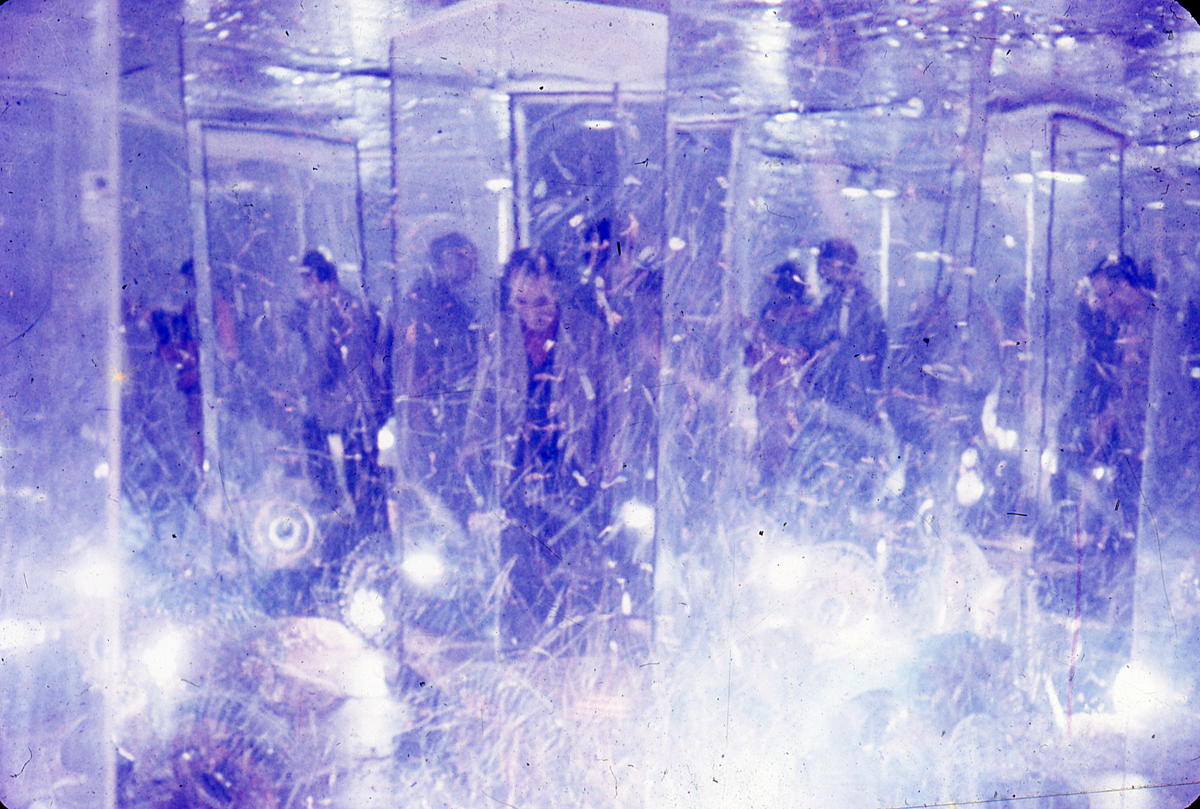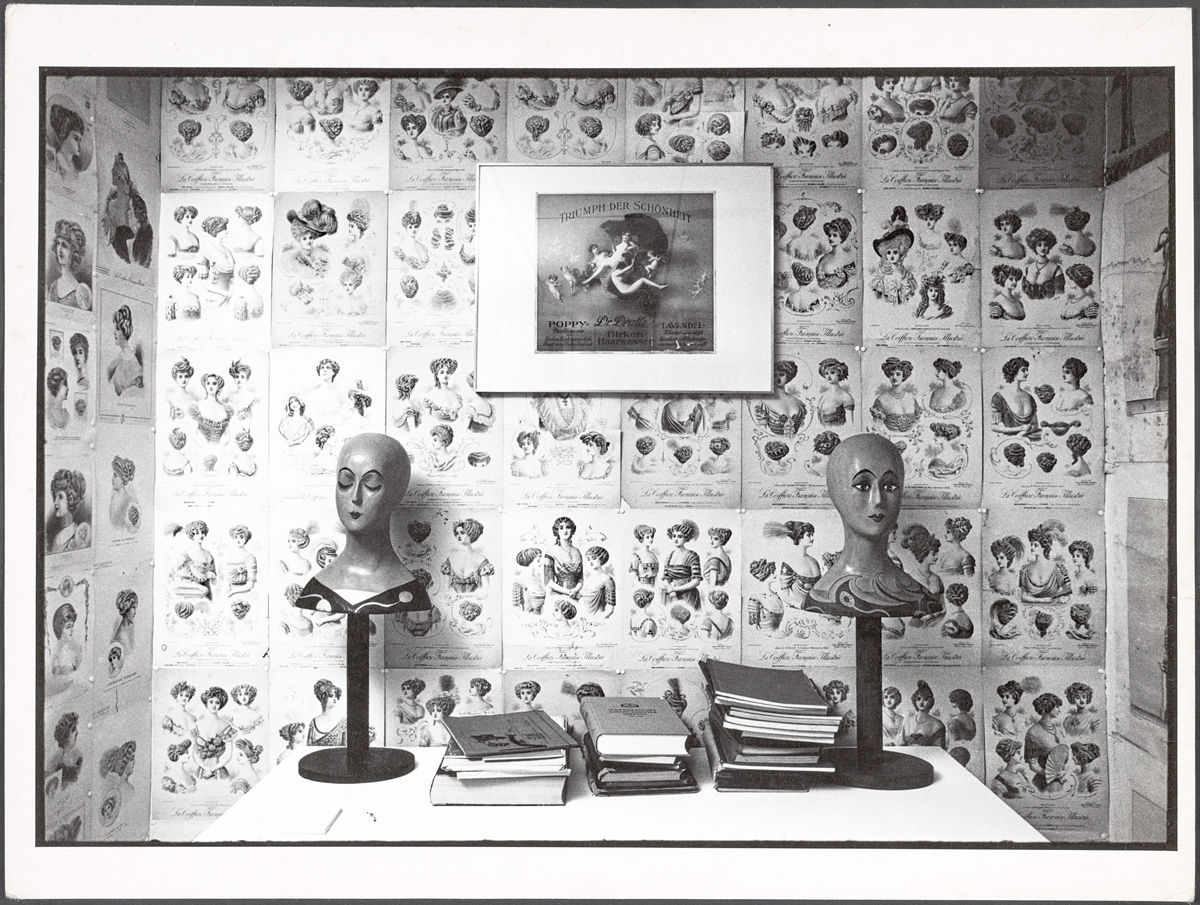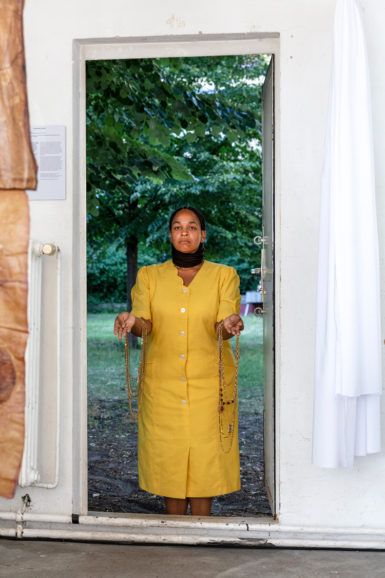[ad_1]

Marta Minujín & Rubén Santantonín, The Octogonal Mirror Room (detail), 1965, from La Menesunda.
COURTESY MARTA MINUJÍN ARCHIVE
TUESDAY, JUNE 25
Talk: “Creative Time Summit Speaking Truth | Economics and Sovereignty” at Abrons Art Center
For the 10th anniversary of its summit series, the activist art organization Creative Time is presenting events in New York focused on injustice and resistance. This discussion, moderated by Gregory Sholette, will take up issues surrounding labor and economic inequity, with speakers including multimedia artist Andrea Carlson and Zina Saro-Wiwa, an artist, curator, and founder of the gallery Boys’ Quarters Project Space.
Abrons Arts Center, 466 Grand Street, 7 p.m. Tickets $10
WEDNESDAY, JUNE 26
Exhibition: Marta Minujín at New Museum
Argentine artist Marta Minujín’s multi-part immersive installation La Menesunda, which debuted in 1965 in Buenos Aires, has been recreated for an exhibition comprising 11 spaces, including a tunnel with neon signs, a bedroom, a hallway lined with TV screens, and a salon with makeup artists and masseuses. The large-scale environment, which is considered one of the earliest works of its kind, explores ideas relating to consumer culture, city life, and mass media.
New Museum, 235 Bowery, 11 a.m.–6 p.m.
Opening: “Painters Reply: Experimental Painting in the 1970s and Now” at Lisson Gallery
Taking a 1975 Artforum questionnaire about the future of painting as its point of departure, this exhibition, curated by Alex Glauber and Lisson Gallery director Alex Logsdail, examines innovations in the medium from the 1970s to the present. Works by some of the respondents to the publication’s survey, such as Joan Snyder and Dona Nelson, are included in the show. Pieces by Lynda Benglis, Mary Corse, Joe Overstreet, Dorothea Rockburne, Ruth Root, Stanley Whitney, and others will also be on view.
Lisson Gallery, 504 West 24th Street and 138 Tenth Avenue, 6–8 p.m.
THURSDAY, JUNE 27
Opening: “garcía, Raina, Shore, Tossin” at Luhring Augustine
This group outing brings together new and recent works by ektor garcía, Kaveri Raina, Rebecca Shore, and Clarissa Tossin. Some of the art addresses political themes—garcía and Tossin, for example, deal with the cross-pollination of artistic styles around the world in their sculptures. Their pieces will be shown alongside paintings by Raina and Shore.
Luhring Augustine, 531 West 24th Street, 6–8 p.m.
Opening: Harald Szeemann at Swiss Institute
With “Grandfather: A Pioneer Like Us,” the Swiss Institute will restage a 1974 exhibition curated by the late Harald Szeemann, who was appointed as director of the Kunsthalle Bern at age 28 and, during the course of his career, reshaped and redefined what it meant to be a curator. The original show, which took place in the curator’s own apartment in Bern, Switzerland, focused on Szeemann’s grandfather, the hairdresser and wigmaker Etienne Szeemann. This full-scale reconstruction of the first presentation will feature some 1,200 objects drawn from the Getty Research Institute’s Harald Szeemann Archive and Library and private collections.
Swiss Institute, 38 St. Mark’s Place, 6–8 p.m.

Installation view of “Grossvater: Ein Pionier wie wir” (Grandfather: A pioneer like us), 1974, showing wig, stands, and books, at Galerie Toni Gerber, Bern, Switzerland.
BALTHASAR BURKHARD/©J. PAUL GETTY TRUST/GETTY RESEARCH INSTITUTE, LOS ANGELES
THURSDAY, JUNE 27
Opening: Allan Sekula at Marian Goodman Gallery
Allan Sekula’s photography and video installations often play on the idea that just about anyone and anything can be connected by global political strife. To survey the late artist’s output, Marian Goodman Gallery will show five works. Among them are This Ain’t China (1974), focused loosely on workers’ rights, the food industry, and Maoist politics, and Dead Letter Office (1996–97), which addresses militarism and tourism on both sides of the U.S.-Mexico border.
Marian Goodman Gallery, 24 West 57th Street, 5–7 p.m.
Opening: Alejandro Cesarco and Tamar Guimarães at Alexander and Bonin
Curated by Luiza Teixeira de Freitas, this exhibition pairs work by Alejandro Cesarco and Tamar Guimarães, both of whom figured in the 2018 Bienal de São Paulo. Cesarco will show works from his 2016 series “The Structure of Feeling,” which pairs stills from a film and quotations from literary figures, in an attempt to understand how meaning might be created. Guimarães is showing two films including O Ensaio (The Rehearsal), a 2018 work wherein actors perform an adaptation of a novel by Joaquim Maria Machado de Assis. In a review of the Bienal de São Paulo for ARTnews, Silas Martí wrote that the work by Guimarães makes a “trenchant, timely point.”
Alexander and Bonin, 47 Walker Street, 6–8 p.m.

Las Nietas De Nonó, Ilustraciones de la Mecánica, 2016-18, performance view, at 10th Berlin Biennale for Contemporary Art, 2018.
TIMO OHLER/COURTESY THE ARTISTS
Concert: Milford Graves at Gavin Brown’s Enterprise
Milford Graves, one of the most imaginative musicians of his generation, has worked with free-jazz improvisation and composition for drums, inquiries into how music affects the human heart, and much more. At this concert, organized by the roving curatorial platform Blank Forms, Graves will debut Music Meets Medicine and Science, a new work that draws on rhythms related to heartbeat data (tapping Graves’s status as “an informally practiced cardiologist,” as described in a show description). The evening will also include a talk and workshop with some of the piece’s participants afterward. (The performance is listed as sold out, but a limited amount of tickets will be available at the door.)
Gavin Brown’s Enterprise, 439 West 127th Street, 8 p.m. Tickets $18.75/$25
FRIDAY, JUNE 28
Performance: Las Nietas de Nonó at Whitney Biennial
Las Nietas de Nonó—a Puerto Rico-based duo whose members are sisters—will bring their performance Ilustraciones de la Mecánica (Illustrations of the Mechanical) to New York as part of the Whitney Biennial. When it was included in the 2018 edition of the Berlin Biennale, the work was shown as an installation that resembled a cross between a doctor’s office and a schoolroom. Activated on occasion by the duo, the installation focused on the exploitation of female black bodies by the medical industry and governmental entities.
Whitney Museum, 99 Gansevoort Street, 8 p.m., also performed on June 29 and June 30. Tickets $8/$10
[ad_2]
Source link

